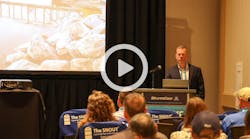
Most of us following the news of the fires in northern California are aware of the immense amount of work that must follow after the flames are out. There’s an urgent need to stabilize the affected areas to prevent erosion and further damage to the region—everything from flooding to mudslides—but another step has to take place even before that, and it’s turning out to be a controversial one: debris removal.
EPA and state officials are concerned about hazardous waste left behind after the fires. As this article notes, crews are getting rid of the most obvious dangers first, such as propane tanks, but EPA is also going to be performing soil testing to ensure other, less apparent things like pesticides, herbicides, paint and other household chemicals, and asbestos are removed. Crews of thousands, some from the US Army Corps of Engineers—about five to seven people on each home site—will be working to clear debris and test the soil, and only then, in most cases, can erosion control measures be put in place.
Nothing is ever simple, though, and some homeowners are objecting to participating in the cleanup. Although the state’s Office of Emergency Services says the owners won’t be directly charged for the work, they will be required to hand over to the county any reimbursement they receive from their insurance companies specifically for debris removal, as well as any insurance money left over after they’ve rebuilt their homes. Property owners also need to sign right-of-entry forms to allow cleanup crews onto their lots. Arguments have broken out over what will and won’t be taken—for example, the government says concrete foundations affected by the wildfire are not safe to rebuild on and will be removed, but some homeowners want them left in place. Those who opt out of the government cleanup efforts can keep their foundations, but with about 6,700 homes lost, finding private contractors to do the work will be expensive, if the homeowners can find people to do the work at all. Each site will need a certificate showing no toxic materials are present before it will be eligible for local building permits.
One thing county, state, and federal officials agree on is that individual homeowners who opt out of the government cleanup efforts should not attempt the work themselves unless they’re well versed on how to avoid the health hazards inherent in shoveling ash and how to properly dispose of any potentially dangerous materials.
Have you been involved in post-fire erosion control efforts in any part of the US? If structures were involved, how difficult was the coordination with cleanup crews?
About the Author
Janice Kaspersen
Janice Kaspersen is the former editor of Erosion Control and Stormwater magazines.

